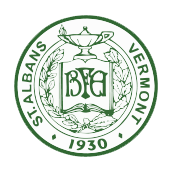April 22, 2024
Dear Parents, Guardians, and School Staff:
By law, all Vermont schools and childcare providers are required to test for lead in drinking water and fix any issues when lead is found above an established action level. The intent of the law is to protect children, students, and staff from lead in these settings.
The health and safety of the children in our care and of our employees is our priority, and we are working quickly to check our system for lead.
The drinking water at BFA/NCTC will be tested for lead during the week of May 5th. We will collect water samples from all taps that are used for drinking and cooking and send the samples to a certified drinking water lab for analysis.
Why is lead a concern?
Lead poisoning can slow down a child’s growth, development, and learning and can cause behavior problems. Children absorb lead more easily than adults, so they are at a higher risk for lead poisoning.
How does lead get into drinking water?
Lead rarely occurs naturally in water supplies. However, lead can get into drinking water through contact with lead pipes, plumbing fixtures and solder.
How will I be notified of the results?
You will be sent a summary of the results within 10 days after we receive the test results from the laboratory.
What will happen if there is lead in the drinking water at the facility?
Any tap that tests at or above the action level will be taken out of use for consumption. Once we fix the issue, and follow-up testing shows the lead level is at or below the action level, the tap can be used again.
We want lead levels in drinking water to be as low as possible. We will find the most effective means of fixing the problem. There are many easy and low-cost fixes to reduce lead in drinking water, including removing seldom-used fixtures or encouraging the use of filtered and properly maintained bottle fill stations.
How do children come in contact with lead?
Exposure to lead is a public health concern in Vermont. Potential sources include dust from deteriorated lead-based paint and products, including toys, keys, jewelry, pottery, dishes, imported candy and foods, and antique, vintage or salvaged goods. Lead can also be found in contaminated soil and old plumbing pipes and fixtures. While a major source of lead poisoning in Vermont children is paint, the lead in plumbing pipes and fixtures can add to a child’s overall lead exposure.
To learn more about lead hazards and lead poisoning prevention, visit HealthVermont.gov/lead.
Can I test the water in my home for lead?
Yes. If you want to test your home drinking water for lead, find a list of certified drinking water labs at TinyURL.com/certified-lab.
Where can I get more information?
For questions about the water testing process, or about the law and its requirements, please call the Lead in School and Child Care Drinking Water Program at 802-863-7220 or 800-439-8550 (toll-free in Vermont).
To contact someone at BFA/NCTC about the testing,
Call 802-527-6555 or Visit: https://www.maplerun.org/o/bfa
·
General information and a link to the summary of school or child care results and remediation, are online at HealthVermont.gov/LeadTesting. (NOTE: If your child’s preschool or after school program is located at a school, the results will be listed under the school’s name.)
Sincerely,
Leonard Smith, Maintenance Director

